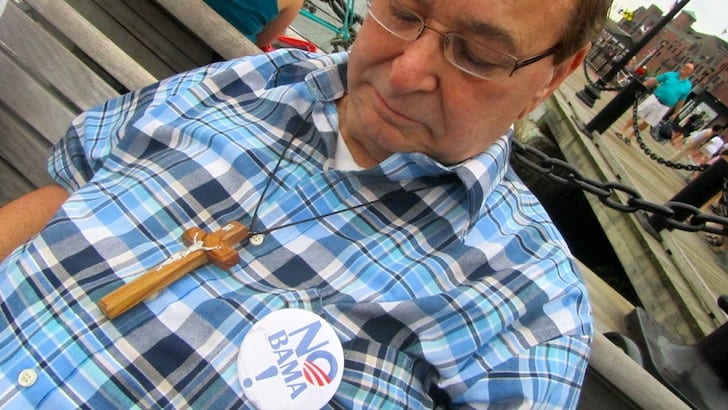
America loves to give racists second chances, so don’t count the alt-right out
Eight years ago last week, there was the first big Tea Party rally in Washington. Earlier this week, I found some audio I recorded of the rally—where thousands of people gathered on the mall, united in their hatred of the federal government, as embodied by Obama—and it was amazing how much it sounded like the Trump rallies I’ve attended.
“What paper are you with?” one woman, who looked like a grandmother and went to church, asked.
I told her I was with the now-defunct Columbia City Paper, hoping that my South Carolina-based publication might give me a little cred with this crowd.
“The only thing your paper’s good for is wiping your reporters’ asses with,” she said.
Another white guy with a mustache who was wearing white tennis shoes, a low-buttoned shirt, and gold chains said there was a revolution coming and that after the revolution the world would look like him.
I think back and I know he was right. Trump is his dream come true.
All of the the aesthetic qualities, the DNA, of the Trump phenomenon was there. And it took over congress that year. So why were we so surprised when Trump won?
A lot of people have blamed the press. I’ve fought back against that—it’s not our job to predict the future. But it is our job to remember the past, and one of the reasons people were so surprised is that we had, in many ways, erased the rougher edges of the Tea Party from our memory. Our news cycles aren’t good at following undercurrents, and things move underground.
So I’ve been really uncomfortable with the narrative that the alt-right is on the wane. Sure, a lot of them have been deplatformed—kicked off of Twitter and Youtube, etc.—but that doesn’t mean that they have gone away or that their ideas are less attractive to a certain portion of America than they were on November 10, 2016, right after Trump’s victory.
It’s useful to remember that, like Trump, a lot of these clowns who have become alt-right or alt-lite celebrities are masters of reinvention because they know how to manipulate the short memory of the media. So here are some possible sequels for a few of the alt-right rogues.
First, Steve Bannon’s fall seems pretty spectacular. Remember the great Jerry Lee Lewis biopic Great Balls of Fire where the Killer is on top of the world and then marries his teen cousin and ends up drunk playing county fairs? If Dennis Quaid were Randy Quaid and wore two shirts, it would be a good depiction of the Breitbart boss-turned-Trump adviser’s fall from grace in recent months. Trump fired Bannon after Charlottesville and the publication of Devil’s Bargain, but Bannon played it off and returned to Breitbart. Then, after the release of Michael Wolff’s Fire and Fury, the billionaire Mercer family who fund the propaganda site severed ties with the man Trump labeled Sloppy Steve and, like so many washed-up American stars, he went on a European tour hoping to become the David Hasselhoff of the global fascist movement, encouraging the racists there to embrace the label. But he will be back. He is still perhaps the most dangerous man of the alt-right. And he is obsessed with intersectional feminism because he understands the fear that strikes into the hearts of schlubby bros everywhere—and he casts it in world-historical terms.
Second, Milo Yiannopoulos was at one time one of the biggest stars on the alt-right, his tour creating chaos and protests, his book deal bringing in big bucks. Now he’s just afraid of being one of the biggest losers—apparently he is terrified of being fat. The shift occurred after a video in which he seemed to endorse sex between “younger boys and older men” surfaced. His publisher dropped him and even Breitbart fired him.
The right can stand all the racism, xenophobia, and hatred you can throw at them, but these people are Pizzagaters, after all—they’ll shoot you for eating a pepperoni pie if they think a pedophile is nearby.
